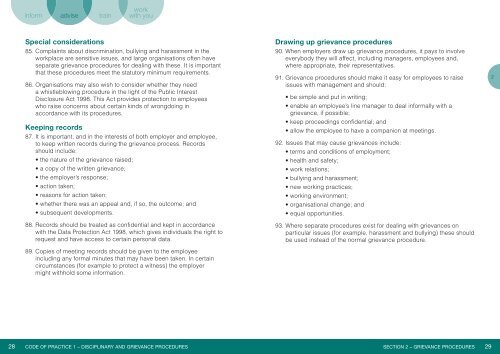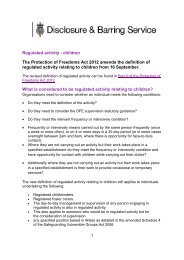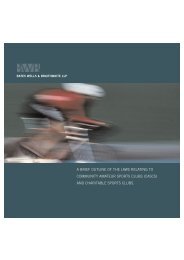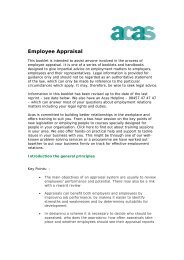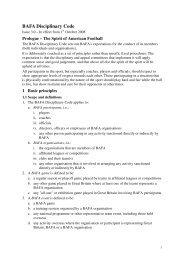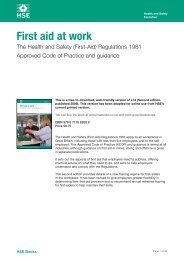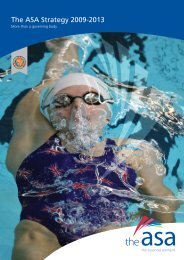Disciplinary & Grievance Procedures - Acas
Disciplinary & Grievance Procedures - Acas
Disciplinary & Grievance Procedures - Acas
You also want an ePaper? Increase the reach of your titles
YUMPU automatically turns print PDFs into web optimized ePapers that Google loves.
Special considerations85. Complaints about discrimination, bullying and harassment in theworkplace are sensitive issues, and large organisations often haveseparate grievance procedures for dealing with these. It is importantthat these procedures meet the statutory minimum requirements.86. Organisations may also wish to consider whether they needa whistleblowing procedure in the light of the Public InterestDisclosure Act 1998. This Act provides protection to employeeswho raise concerns about certain kinds of wrongdoing inaccordance with its procedures.Keeping records87. It is important, and in the interests of both employer and employee,to keep written records during the grievance process. Recordsshould include:• the nature of the grievance raised;• a copy of the written grievance;• the employer’s response;• action taken;• reasons for action taken;• whether there was an appeal and, if so, the outcome; and• subsequent developments.88. Records should be treated as confidential and kept in accordancewith the Data Protection Act 1998, which gives individuals the right torequest and have access to certain personal data.89. Copies of meeting records should be given to the employeeincluding any formal minutes that may have been taken. In certaincircumstances (for example to protect a witness) the employermight withhold some information.Drawing up grievance procedures90. When employers draw up grievance procedures, it pays to involveeverybody they will affect, including managers, employees and,where appropriate, their representatives.91. <strong>Grievance</strong> procedures should make it easy for employees to raiseissues with management and should:• be simple and put in writing;• enable an employee’s line manager to deal informally with agrievance, if possible;• keep proceedings confidential; and• allow the employee to have a companion at meetings.92. Issues that may cause grievances include:• terms and conditions of employment;• health and safety;• work relations;• bullying and harassment;• new working practices;• working environment;• organisational change; and• equal opportunities.93. Where separate procedures exist for dealing with grievances onparticular issues (for example, harassment and bullying) these shouldbe used instead of the normal grievance procedure.228 CODE OF PRACTICE 1 – DISCIPLINARY AND GRIEVANCE PROCEDURES SECTION 2 – GRIEVANCE PROCEDURES 29


